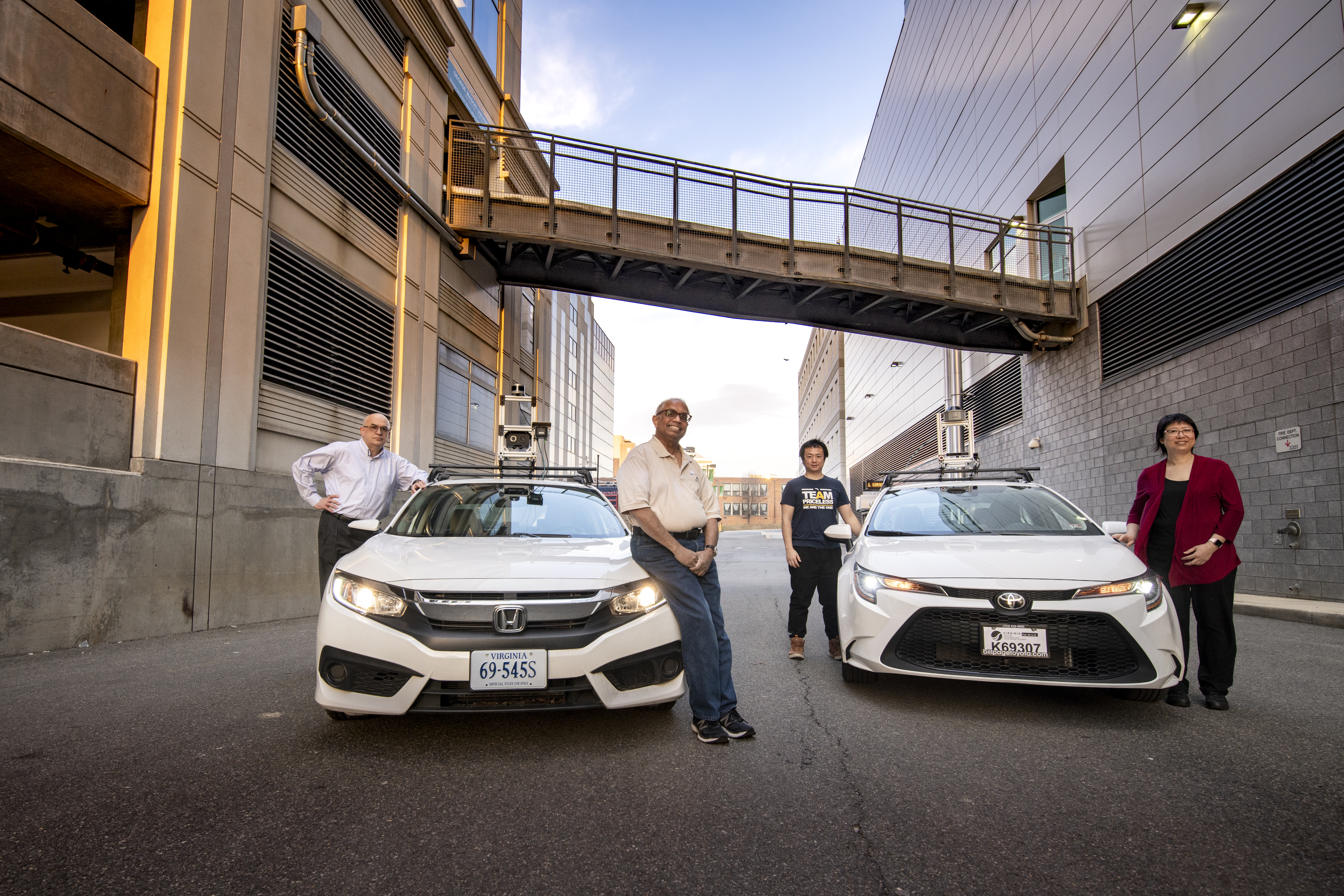Topics
In This Story
Driving three decked-out Toyota Corollas, researchers are taking to the busy streets of northern Virginia and Washington, D.C. to test sensors and cameras they’ve installed to simulate a self-driving car. “My number one goal is to take on Dupont Circle, but we’ll see if we can overcome that crazy obstacle,” says Duminda Wijesekera, a professor of computer science at George Mason University’s Volgenau School of Engineering.
Wijesekera, the project lead, is using artificial intelligence to help create smarter car sensors. His research seeks to improve an autonomous cars’ ability to recognize potential hazards at night, in severe weather, and in construction conditions, making the roads safer for everyone.
He’s drawing upon the expertise of the CCI network by engaging several professors across Virginia, including Sachin Shetty, associate professor at Old Dominion University, Ying Wang, senior engineer at CCI’s Hub located at Virginia Tech’s Arlington Research Center, Vijay Shah, research assistant professor at Virginia Tech, and Jeffrey Reed, a Virginia Tech engineering professor and CCI’s chief technology officer. What the team learns could be applied to other 5G-connected technology in the future.
It’s this type of complex problem that CCI was designed to solve, says Luiz DaSilva, CCI executive director. “CCI brings together 320 researchers from 39 higher education institutions across Virginia to focus on research, innovation, and workforce development at the intersection of security, autonomous systems, and data.”
CCI’s funding allowed Wijesekera to purchase three Toyota Corollas as testbeds. Prior to receiving the grant and vehicles from CCI, Wijesekera was volunteering his own car to test the AI technology on the streets of Washington, D.C.
“The ability to test innovative solutions using real equipment is crucial,” DaSilva says. “It often reveals practical issues that the solution needs to deal with that may not be clear from simulations and theoretical models. It also adds a layer of credibility to results.”
How the technology works
Traditionally, autonomous vehicles create obstacle-free driving paths using image recognition software. Sometimes, the software can fail to recognize obstacles in the road in low-light conditions such as dusk and dawn, rain, and construction zones. This can result in the software mistakenly creating driving paths with dangerous obstacles in the way.
Wijesekera and his team are using AI to make sure that doesn’t happen. “To combat this issue, first, I use two cameras - a color camera and an Infrared camera,” Wijesekera explains. “Then I take data from both cameras and ‘fuse them’ using a deep learning process called AI.”
Future applications
Reed says findings from Wijesekera’s research can change the future of more than just autonomous vehicles. “This kind of research can apply to biomedical technologies, smart homes, and even how we teach in our classrooms,” he says.
Shetty is working on developing a privacy-preserving 5G network for tracking trucks in the Port of Virginia, which also includes some work of Wijesekera’s findings. “The privacy-preserving 5G network from Wijesekera’s project would ensure that when we track trucks, we do not track any sensitive information that could be weaponized by attackers. Even if attackers sniff the information, the driver’s privacy is protected.”
A safer road forward
Distracted driving claimed the lives of 1,730 drivers, 605 passengers, 400 pedestrians, and 77 bicyclists in 2018 alone, according to the National Highway Traffic Safety Administration (NHTSA).
“Just like automated-trains, an entirely automated-car world would be cleaner, safer, and greener in the long run,” says Wijesekera. “I’m hoping this is the first step of many towards making driving totally handled by machines.”

